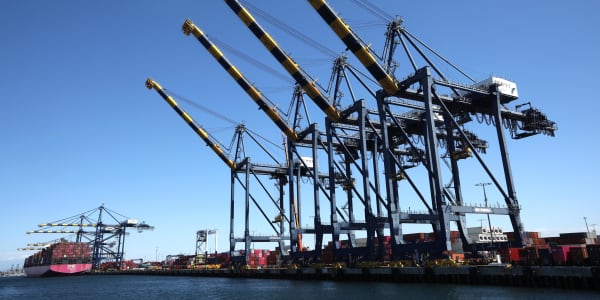The supply chain may be getting better, but the challenges aren't going away.
That's according to a new survey from SAP which finds more than half (51%) of U.S. companies expecting the supply chain to remain challenging into 2023.
The findings from the German software giant, the global leader in supply chain software with approximately 23% market share, according to Cowen, paints a picture of a supply chain that will remain in rapid flux for the U.S. economy.
"The supply chain rules have changed and they've changed for good. There is no going back," SAP board member Scott Russell told CNBC. "We're in a post globalization world now," he said of the supply chain crunch caused by the Covid-19 pandemic. "The chaos and the disruption is proving that the supply chain just wasn't as robust as they expected it to be."
Many U.S. companies are now shifting from a "just in time" supply chain model to a "just in case" model — essentially carrying more inventory and often use of more suppliers closer to the United States as opposed to reliance on Chinese manufacturing. This shift is expected to increase costs while U.S. consumers are also dealing with historic inflation.
"The supply chain issues are costly and it isn't all due to inflation," Russell said. "The costs to be able to build that resilience are ultimately being borne by the consumer, who now needs to prioritize lower prices over quality."
Rising costs in supply chain shifts are also impacting business decisions. Sixty-one percent of survey respondents said wage and recruitment freezes would be their top move to combat continued rising supply chain costs.
With the disruption of the Covid pandemic easing, U.S. businesses now say the war between Russia and Ukraine is the top factor causing supply chain disruption. Issues related to the European conflict, lack of raw material/components and rising fuel/energy costs were the other top factors listed by companies.
To overcome these macroeconomic issues, more U.S. companies are turning to technology and simultaneously emphasizing the need for sustainability.
"Nearly half said the sustainability credentials of the supply chain becomes a critical element in the way that they look at their transformation going forward" Russell said. "They want to engage in not only an efficient supply chain that has resiliency, but they want to deal with businesses that have got an ESG agenda."





